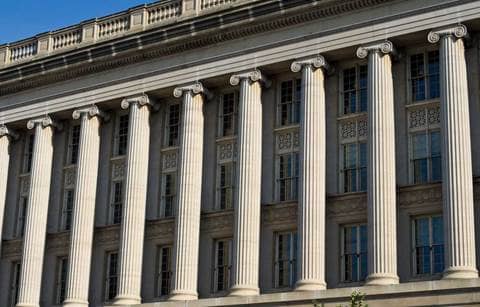The Internal Revenue Service (IRS) has provided new guidance related to the restoration of domestic and experimental (R&E) expenditures under Internal Revenue Code (IRC) Section 174. The One, Big, Beautiful Bill (OBBB) recently restored immediate business deductions for domestic R&E costs incurred in 2025 and beyond. Importantly, that bill also included transition rules that provide multiple options for taxpayers to recognize the tax benefits of previously capitalized domestic R&E expenses. One of those options, applicable only to small business taxpayers, is retroactive in nature and has implications for 2022, 2023, and 2024 tax returns. The new guidance in Rev. Proc. 2025-28 clarifies the time-sensitive procedural steps available to small business taxpayers who wish to implement the domestic R&E deduction transition on their 2024 tax returns.
Transitioning to restored deductions
Historically, R&E expenses have been deductible when incurred. However, the Tax Cuts and Jobs Act (TCJA) imposed a new capitalization and amortization regime starting in 2022, under which domestic R&E would be amortized over five years and foreign R&E would be amortized over 15 years. Since the enactment of the TCJA, these Section 174 rules have slowed deductions in 2022, 2023, and 2024.
The OBBB changed this landscape by restoring current deductions for domestic R&E beginning in 2025 while retaining the 15-year amortization period for foreign R&E. Going further, the OBBB created options for deducting the amount of previously capitalized domestic R&E incurred in 2022 through 2024. The simplest options — either continuing to amortize such amounts or deducting the unamortized domestic R&E in 2025 (or equally across 2025 and 2026) — don’t require immediate action. However, the retroactive deduction option provided to small business taxpayers does have implications for 2024 tax returns that have either been filed already or will be filed ahead of the September 15 or October 15 deadlines.
Who is a qualifying small business taxpayer?
The retroactive Section 174 transition rule offered by the OBBB is only applicable to qualifying small business taxpayers. For this purpose, a small business taxpayer is one that (1) had less than $31 million of average annual gross receipts for 2022-2024 and (2) will not be considered a tax shelter in 2025. Both aspects of that definition must be satisfied and raise differing practical considerations:
- The gross receipts test. Fortunately, the gross receipts test is backward looking so the relevant facts are knowable today. Care must still be taken to ensure that all gross receipts are counted, regardless of where they are presented on a tax return, and that appropriate tax accounting is considered in this process (e.g., cash basis taxpayers should measure gross receipts on a cash basis).
- The tax shelter test. The tax shelter determination is more complicated since it’s predicated on facts from the 2025 tax year, which isn’t yet complete. The most common way for a pass-through entity to be considered a tax shelter is if more than 35% of any tax losses recognized in the year are allocated to owners that aren’t active in management. This portion of the tax shelter rule doesn’t impact C corporations since the focus is on loss allocations to owners. The tax classification of an entity for 2025 can be known today, and its ownership structure is generally knowable, albeit subject to change with any ownership transfers occurring late in the year. However, the actual taxable income or loss to be recognized by the entity in 2025 and how that loss would be allocated is still subject to change. In this respect, businesses should carefully consider the likelihood of factors altering taxable income/loss in a manner that could disqualify them from the small business taxpayer category.
- Observation. Generally, taxpayers are able to make an election to look to their prior year taxable income and allocations when making a tax shelter determination in a current year. For example, a taxpayer could look to its 2024 taxable income and allocations when making a tax shelter determination for 2025. This election also applies to the tax shelter determination for the retroactive application of domestic R&E expensing. A special rule prevents the deduction resulting from an SBR election from being factored into the tax shelter determination. However, such relief does not appear to exist for a taxpayer making the SBR Method Change.
Confirming qualification as a small business taxpayer is an important first step in evaluating the options to implement the domestic R&E transition rules. Those that do qualify are then faced with the question of whether to pursue retroactive application in 2024 and earlier years.
Deduction options for small businesses
Small business taxpayers who wish to free up domestic R&E deductions on their 2024 tax returns are presented with several immediate actions that might be necessary. Notably, such actions won’t be required for those who either don’t qualify as small businesses or those who wish to only free up deductions beginning in 2025. However, Rev. Proc. 2025-28 offers two options with retroactive impact:
- SBR Election. Section 3 of Rev. Proc. 2025-28 describes the Small Business Retroactivity Election (SBR Election), which includes full retroactivity. Based on this, a taxpayer can deduct its domestic R&E expenditures in each of 2022, 2023, and 2024. The SBR Election is made either on an original or superseding 2024 tax return or on an amended return (administrative adjustment request (AAR) in the case of certain partnerships). If the election is made on the original or superseding 2024 tax return, the taxpayer is permitted to deduct its 2024 domestic R&E. Previously capitalized domestic R&E from 2022 and 2023 will not be amortized in 2024 and will instead be deducted in 2022 and 2023 through amended tax return filings (or AARs). While an SBR Election can be made on a timely filed or superseding 2024 tax return, it can also be made as late as July 6, 2026 (or the expiration of the statute of limitations on the 2022 tax return if that is prior to July 6, 2026). The implementation of this election also requires coordination with Section 280C, as discussed in more detail below.
- SBR Method Change. Section 7 of Rev. Proc. 2025-28 describes the Small Business Retroactive Method Change (SBR Method Change), which implements an automatic accounting method change with the 2024 tax return. When an SBR Method Change is made, the taxpayer is not required to capitalize its 2024 domestic R&E and is permitted to deduct its remaining 2022 and 2023 domestic R&E on the 2024 tax return as a Section 481(a) adjustment. Although prior year amendments or AARs may still be required to implement Section 280C. Importantly, an accounting method change can only be made on a timely filed tax return, including a superseding tax return. Since an SBR Method Change is made on a 2024 tax return, there’s a very short window of time for a small business taxpayer to pursue this option.
- Rev. Proc. 2025-28 also provides that all small taxpayers who timely filed 2024 tax returns are permitted to file superseded returns to make the SBR Election, SBR Method Change, or to make/revoke a Section 280(C)(2) election. Therefore, even if a return was filed timely without an extension, there’s still time to take action on a superseded 2024 tax return if that is desired.
A primer on Section 280C
Making either the SBR Election or the SBR Method Change requires an accompanying adjustment under Section 280C for those small taxpayers who claim research credits. Section 280C provides a coordination rule between the R&E tax credit and the deduction of R&E expenses. Section 280C is generally written to deny double counting of expenses for both the R&D credit and R&E deductions. Accordingly, taxpayers either reduce their expense deductions by the amount of the R&D credit claimed or reduce their R&D credit by 21%.
While the TCJA modified the R&E rules under Section 174, it did not fully coordinate the Section 280C rules. Accordingly, taxpayers that did not elect to reduce their R&D credit in 2022-2024 also generally did not need to reduce their capitalized R&E expenses during that period. The OBBB made retroactive changes to Section 280C to align the rules beginning in 2022, but only for taxpayers making an SBR Election or SBR Method Change. The result is that any small business taxpayers wishing to take advantage of a retroactive approach to domestic R&E expenses will also need to implement Section 280C, as modified. Such a change will either require a reduction in prior year R&D credits (to implement the 21% reduction) or a reduction in capitalized R&E costs.
In many cases, the permanent loss of tax dollars under Section 280C will outweigh the timing benefit of deducting the 2022, 2023, and 2024 domestic R&E costs earlier. In those cases, it may be best to simply claim the deduction in 2025 instead. Modeling of the options will clarify the path for managing the impact of Section 280C.
Other considerations: AARs and state conformity
The small taxpayer retroactive options described above both implicate the need to amend prior year tax returns in at least some respects. For certain partnerships, this means utilization of the AAR process, which defers partner recognition of such changes until the year in which the AAR is filed. However, a quirk in the AAR process relating to net negative adjustments means that additional deductions released in 2022 and 2023 under the SBR Election may not ultimately benefit partners in 2025 or 2026 when the AARs are filed. Specifically, partners will need to ensure that they have enough of a 2025 or 2026 tax liability to fully adsorb the benefits with respect to any AARs filed in 2025 or 2026. That tax liability might already be depressed by bonus depreciation, increased Section 163(j) deductions, and domestic R&E deductions passed through from other businesses that are not small taxpayers. If there isn’t enough tax liability to absorb the benefits from the AAR, the benefits are permanently lost.
The topic of state conformity (or nonconformity) with the OBBB is also going to be a very popular topic over the coming months and years. In the very short term, taxpayers will need to evaluate whether applicable states conform to the Section 174 aspects of the OBBB under state laws as currently enacted. Those taxpayers also may need to continually monitor state guidance or legislative action to determine whether further changes may be necessary in the future. The costs of managing state tax amendments and conformity matters could reduce the overall benefit of either the SBR Election or SBR Method Change in the meantime and complicate the filing process over the next several weeks and months.
So, what now?
In the very short term, businesses must evaluate whether they’re eligible for small taxpayer retroactivity, and, if so, whether they wish to pursue either of those options. Utilizing the SBR Election or the SBR Method Change is helpful in that it accelerates deductions into 2024 and potentially into 2022 and 2023 (if utilizing the SBR Election). However, that may not always be the ideal result when considering all factors, including permanent tax increases resulting from the retroactive application of Section 280C and the administrative costs associated with amending federal and state tax returns (or filing AARs). Specifically, the deeper version of this analysis requires a careful review of the optimal timing for domestic R&E deductions, including their interaction with other changes made by the OBBB.





